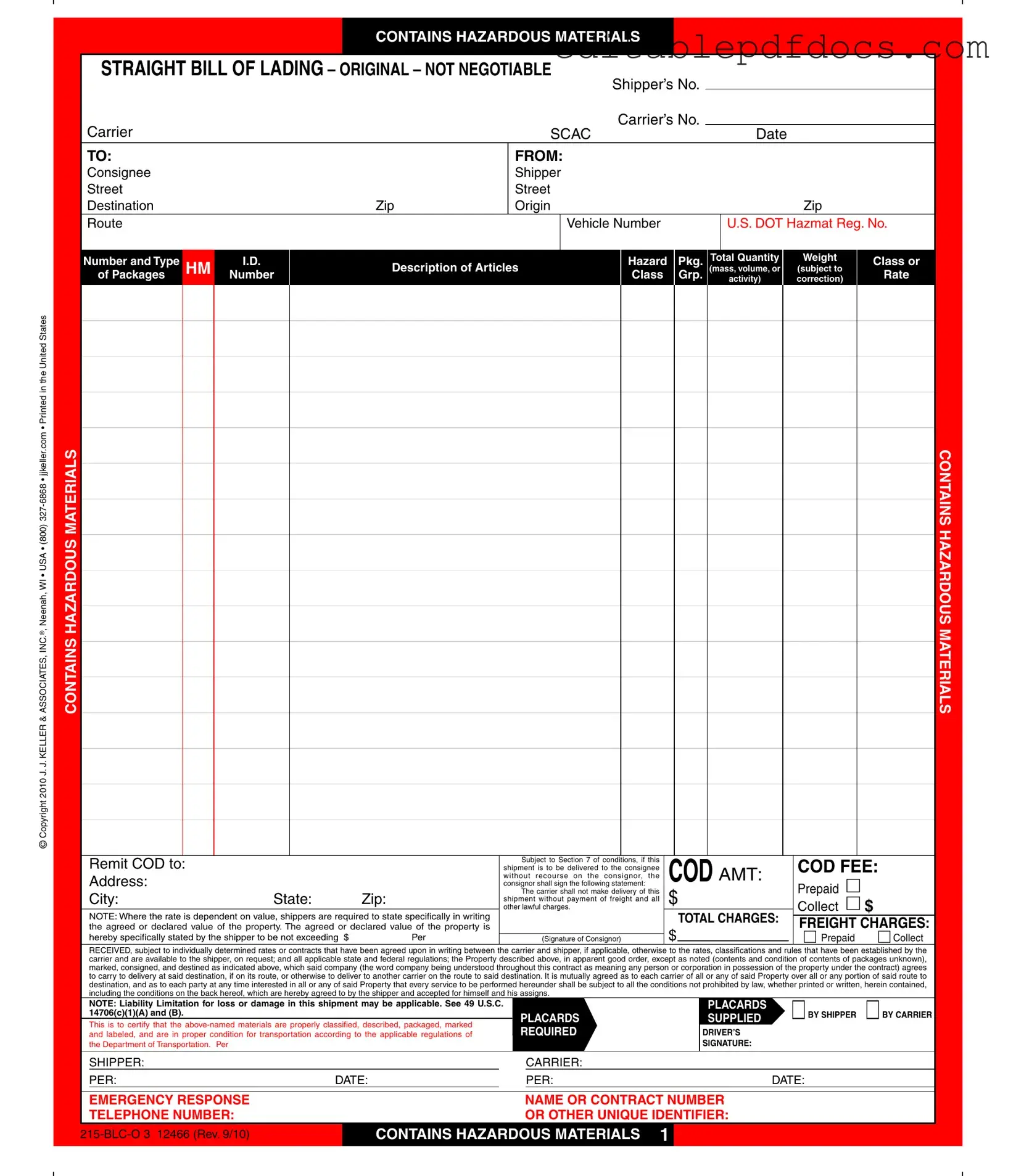The Hazard Bill of Lading form serves as a critical document in the transportation of hazardous materials, ensuring that both shippers and carriers comply with federal and state regulations. This form outlines essential details such as the shipper's and consignee's information, the description of the hazardous materials being transported, and the associated weight and quantity. It also specifies whether the shipment is prepaid or collect, along with any applicable charges. Notably, the form includes important legal disclaimers regarding liability, emphasizing the responsibilities of both the shipper and the carrier in case of loss or damage. Furthermore, it highlights the need for proper classification and packaging of hazardous materials, ensuring safety throughout the transport process. The form also addresses the procedures for filing claims and the potential limitations of liability, which are crucial for protecting the interests of all parties involved. Overall, the Hazard Bill of Lading is not just a shipping document; it is a vital tool for maintaining safety and compliance in the transport of hazardous goods.
